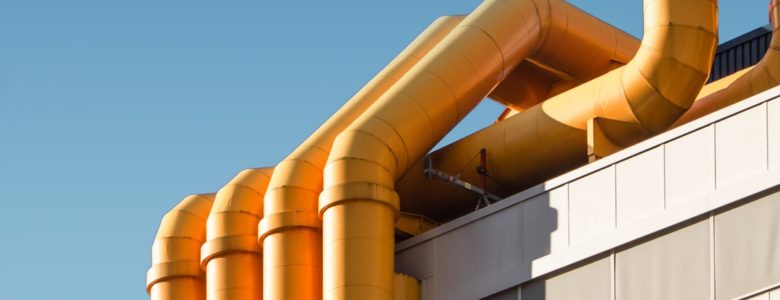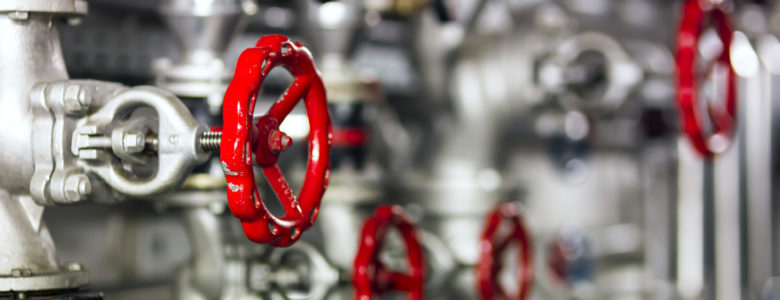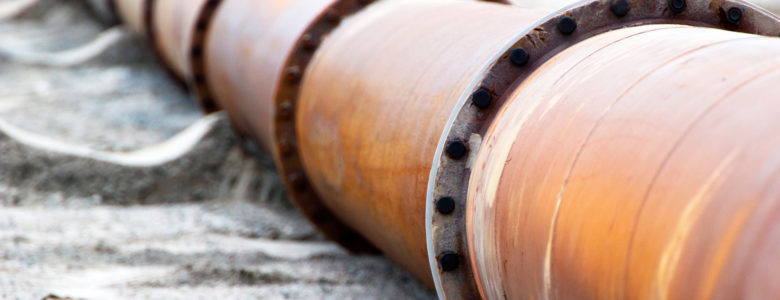Corrosion is the deterioration of metals and other materials through chemical interactions with its surrounding environment. If you own a factory or any other place of business with large amounts of pipelines or other metalworks, corrosion is enemy #1. Corrosion is a terribly annoying byproduct of metal pipelines. A recent study found that the global cost of corrosion to float somewhere around $2.5 trillion, which makes pipeline corrosion protection methods critical.
That’s nearly 3.4% of our planet’s global GDP. If you own a factory or plant that houses pipelines and other metalworks, you probably already know what a cursed affliction corrosion can be. But if you’re trying to make your profit margins as wide as possible, you need to try your best to win in this battle against mother nature.
In this brief guide, we’ll discuss pipeline corrosion protection and why it’s important.
What Is Pipeline Corrosion?
Pipeline corrosion functions like any other form of corrosion. But pipes are often exposed to open air or buried underground. In these outdoor environments, they are especially susceptible to corrosion.
There are several different kinds of corrosion. And they each need to be dealt with in potentially different ways.
General Corrosion
This type of corrosion occurs due to simple exposure to the elements like wind, rain, condensation, or dust. Most commonly, this sort of corrosion comes in the form of rust and affects the entire structure, or segment, of a pipeline.
The good news is that this form of corrosion happens slowly and can be easily spotted and prevented.
Localized Corrosion
As the name suggests, this form of corrosion happens on a smaller scale but can be more disastrous as it’s tougher to spot. Localized corrosion occurs in three forms: pitting, crevice corrosion, and filiform corrosion.
Galvanic Corrosion
This type of corrosion occurs when two different metals are placed next together in certain underwater environments like saltwater. In this electrolyte-filled environment, one metal’s molecules are attracted to the other. As a result, one of the two metals corrodes at an accelerated rate.
Cathodic Corrosion
Cathodic methods of corrosion protection are by far the most complicated, but it’s very effective. Cathodic protection works by creating an electrical current around the pipe using anodes and cathodes. Simply put, this system repels corrosive molecules away from the pipe.
In a sacrificial cathodic protection system, the cathodes begin to corrode instead of the more important metal pipes.
This method protects against galvanic corrosion. Galvanic corrosion happens when two metals are placed closely together in a corrosive environment – i.e. salty seawater or wet soil.
Why It’s Important to Protect Your Pipelines
Corrosion, if not dealt with, can absolutely destroy the infrastructure of a factory or any other business. It can cause bridges to collapse, oil pipelines to bust open, or bathroom plumbing to leak. It’s estimated that corrosion costs businesses 2.5 trillion dollars globally. Corrosion is no joke, and if you want to run your business effectively, you need to know how to guard against it.
There are a few different ways to protect against corrosion. The two most popular are cathodic protection, and selecting corrosion-resistant materials to protect your pipelines. Cathode protection involves placing cathodes along your pipelines that repel harmful molecules and ions from your pipes. The alternative method of corrosion protection involves simply placing corrosion-resistant materials – like rubber – over your pipelines.
This physical guard will protect your precious metalworks from environmental forces. These forces, like rain, condensation, and debris that can damage the integrity of your pipes over time. If you’d like to learn more about how to prevent pipeline corrosion, click here.
You can also select metals and other materials that are less susceptible to corrosion when creating your pipelines. No metal is truly immune to corrosion. What once came from the ground will have to return in death, but some are better than others. Materials such as stainless steels, plastics, and special alloys can greatly extend the life cycle of a pipeline. Nickel, steel, or titanium alloys are particularly good at preventing corrosion. This is especially true when coupled with a different protection method like pipe saddles.
It’s also important to monitor the surface of the materials once you’ve put them to use. Cracks, chips, and fissures from general wear-and-tear in the pipeline can rapidly increase the rate of corrosion.
Need Help with Pipeline Corrosion Protection?
Hopefully, this guide has shown you why pipeline corrosion protection is so important. No matter the environment your pipelines are in, they are susceptible to the business-ruining effects of corrosion.
If you need help protecting your metal pipes from environmental hazards, consider checking out our products. We make easy-to-install pipeline guards that will protect your pipes from the most corrosive environmental properties. What’s more, they don’t interfere with any cathodic protection methods you may already have in place.

























